Thypoch Simera 28mm F1.4 Review
Dustin Abbott
January 22nd, 2024

It’s always interesting to see new lens makers enter the picture. There’s probably a very good chance that you’ve never heard of Thypoch or their Simera line of lenses, so we’ll explore a little about the brand in the section below. The Simera lineup debuts with two lenses – a 28mm and a 35mm F1.4 – both of which are designed for Leica M-mount and its macular linkage. Anything with the name “Leica” attached to it tends to be ridiculously expensive, so these compact Thypoch lenses with their reasonable price tags are a breath of fresh air. Today’s review focuses on the Simera 28mm F1.4; a lens which I quickly grew to appreciate because of its very nice blend of sharpness and rendering. You can get my full thoughts by checking out my video review below…or just keep reading.
Follow Me @ YouTube | Patreon | Instagram | Facebook | DA Merchandise | Flickr | 500px
Thanks to Thypoch for sending me review loaners of these lenses. As always, this is a completely independent review. *The tests and most of the photos that I share as a part of my review cycle have been done with the Sony a7RV along with the Sony Alpha 1 that serve as my benchmark cameras for Sony lenses.
__________________________________________________________________________________________________
As noted, Thypoch is a new lensmaker, and their name is a combination of the word “Thy” (as in “you”) and the word “epoch”, which refers to the age, era, or time in a person’s life. It’s a bit of a mouthful to say, but the intent is that they want to project a brand that is about enabling a person’s creativity and ability to make art that suits their self-expression. The word “Simera” is similar, as it is actually a transliteration of a Greek word which means “today”.
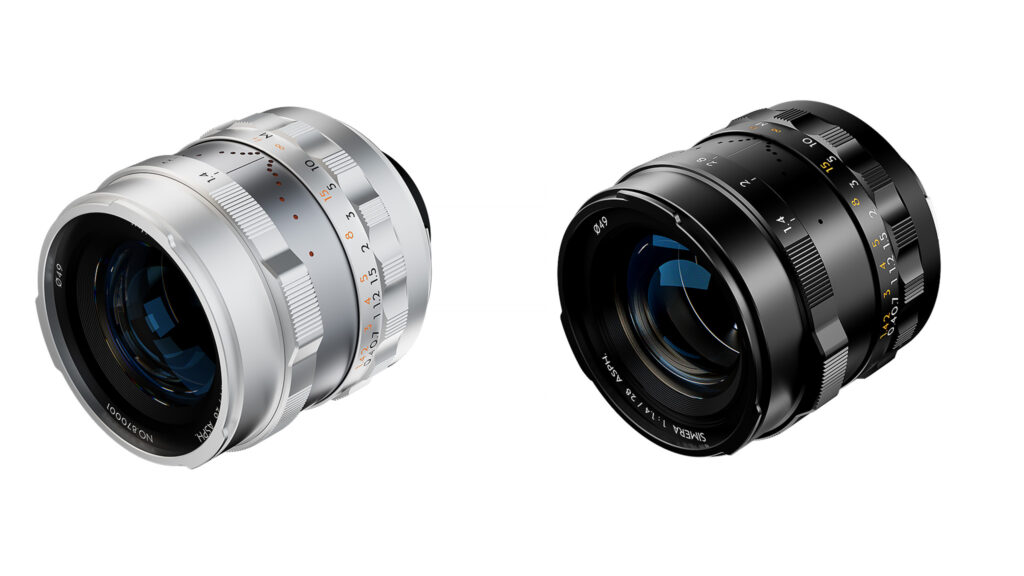
I’ve got the silver editions of these lenses in for review (a look I’m very partial to, actually), but they are also available in a traditional black finish as well.
The Simera 28mm is really designed for Leica M-mount rangefinder style cameras, but as I don’t own an M-mount camera, I’m using the Techart LM-EA9 auto adapter that allows me to have autofocus (of a sort) on Sony E-mount. I’ve also used a much cheaper manual adapter from Neewer to evaluate using more typical manual focus as well.
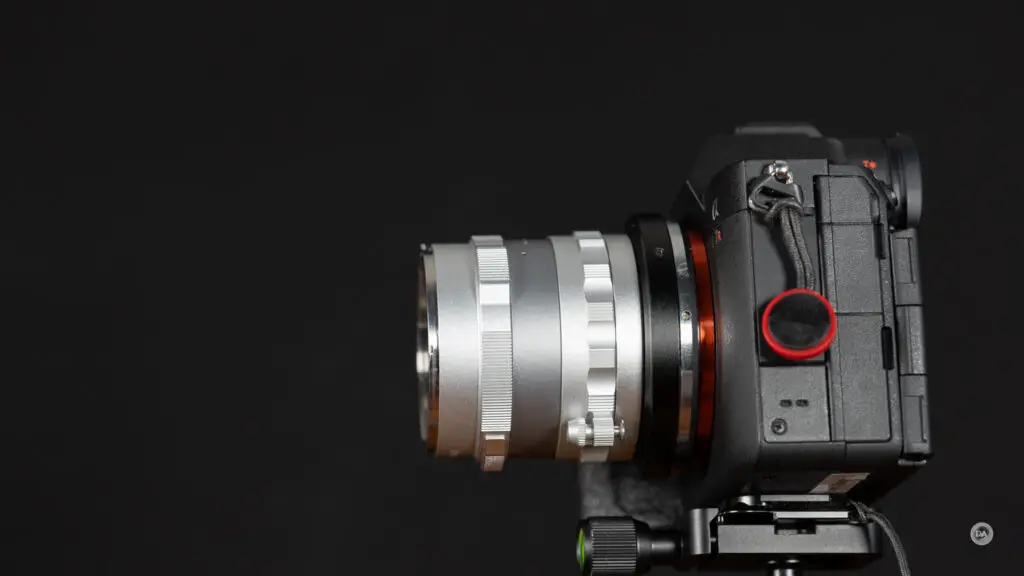
The retail price for the Simera 28mm F1.4 will be $699 USD, and if that seems expensive for a manual focus lens, consider the competition. Leica makes a number of 28mm lenses with differing maximum apertures, but the most direct comparison is the Leica Summilux-M 28mm F1.4, which retails for a cool $7795 USD – about 11x as much! Even their Summicron 28mm F2 costs $5295, so that’s obviously a huge value.
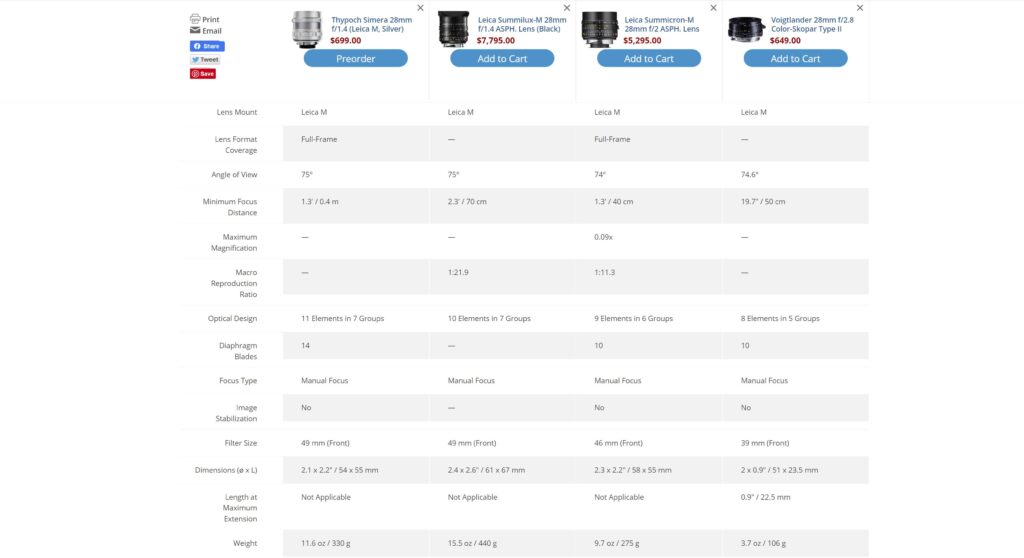
Voigtlander makes some lovely images (I personally own one), and their Color-Skopar 28mm F2.8 is similar in price to the Simera 28mm, but that obviously is a full two stops slower in aperture. The Simera 28mm F1.4 is a strong value on the Leica platform…if it optically holds up. Fortunately for newcomer Thypoch, it does….

One caveat: I don’t own a Leica camera and I’m not familiar with the Leica platform and alternative lenses. Those are hardly fair comparison points because they are so incredibly expensive anyway. My points of comparison will be more on Sony, as that’s where I’m actually testing the lens. Here’s hoping that Thypoch can find some experienced Leica users to review the Simera lenses on their native platform.
Build and Handling
While for practical reasons I want everyone to be making autofocus lenses, I will confess to having a soft spot for nicely made manual focus lenses. There’s a bit of a “zen” quality to shooting manual focus under the right conditions, namely when you aren’t in a rush and can just enjoy the process of making art.
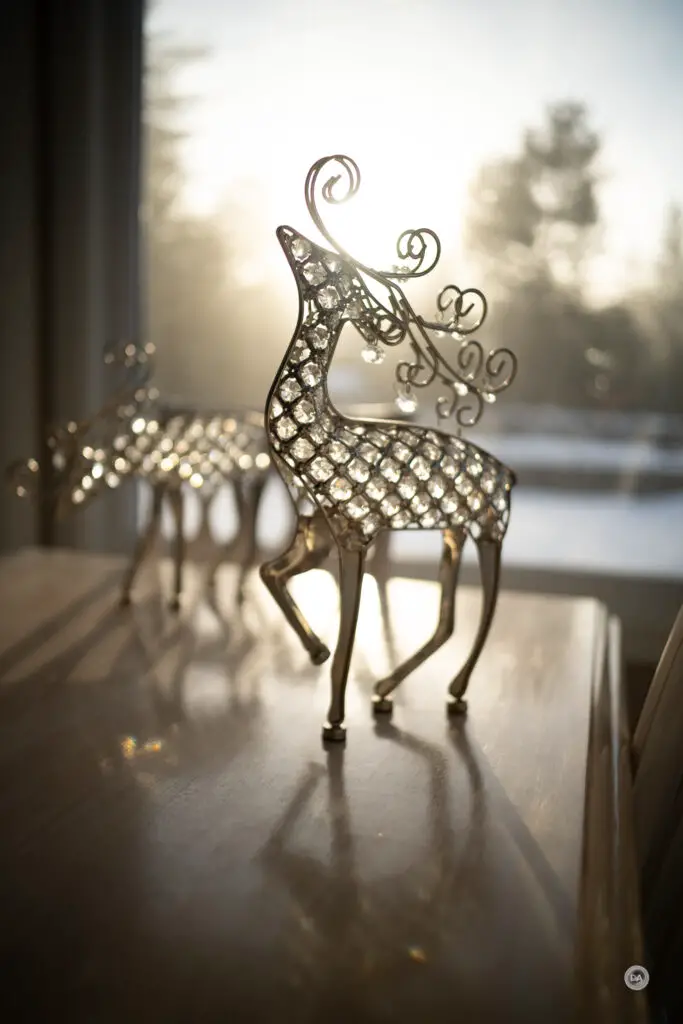
Thypoch might be new to the game, but the Simera lenses are very nicely made and include a few upscale touches along with a few “Easter eggs” that I’ve discovered along the way. There’s excellent attention to detail in the build, with nice materials that go all the way to the premium looking and feel front and rear caps, which feel like lightweight aluminum rather than plastic and have nice detailed etched in them.
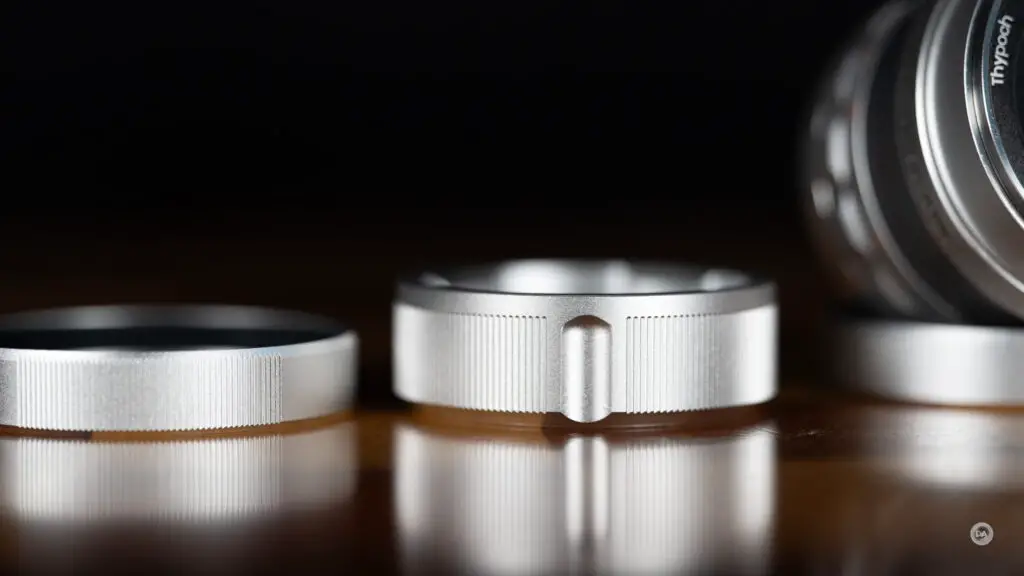
Leica users tend to like to travel light, and the Simera 28mm strikes a nice balance between quality of build and light weight. The lens is 54mm in diameter (2.1″) and utilizes a very compact 49mm front filter threading (in metal). The lens is 55mm (2.2″) in length and weighs in at 330g (11.6oz), which does undercut the weight of the Leica Summilux-M by 110g.
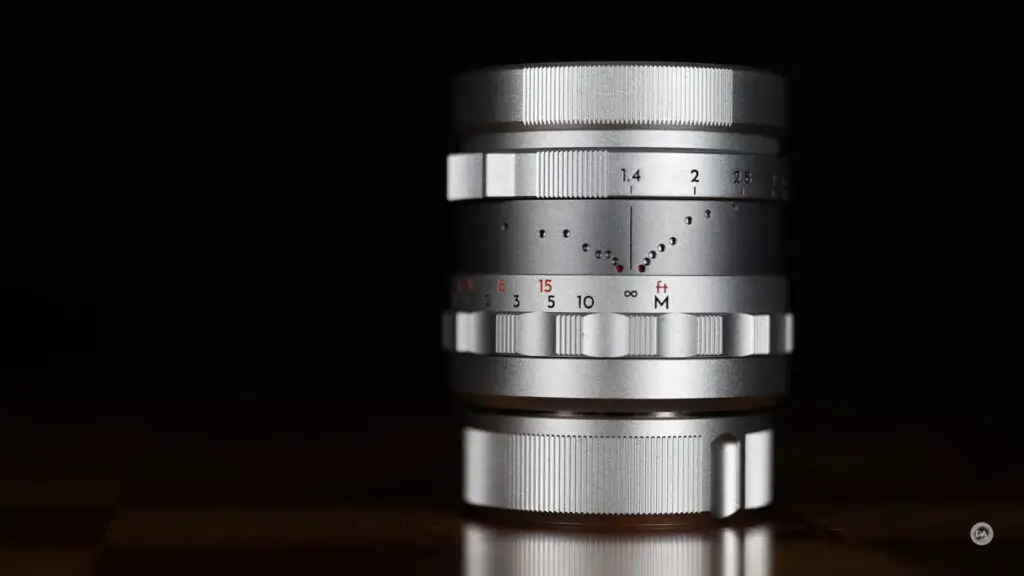
There are two rings on the lens barrel with a middle section in between them that contains one of the clever touches. The first ring is the focus ring, which has knurled sections that provide excellent grip throughout the focus range of roughly 100°.

There is a unique locked section for infinity focus which you can easily move into with just a little extra force, but does require depressing a little pin to release it from the infinity lock.
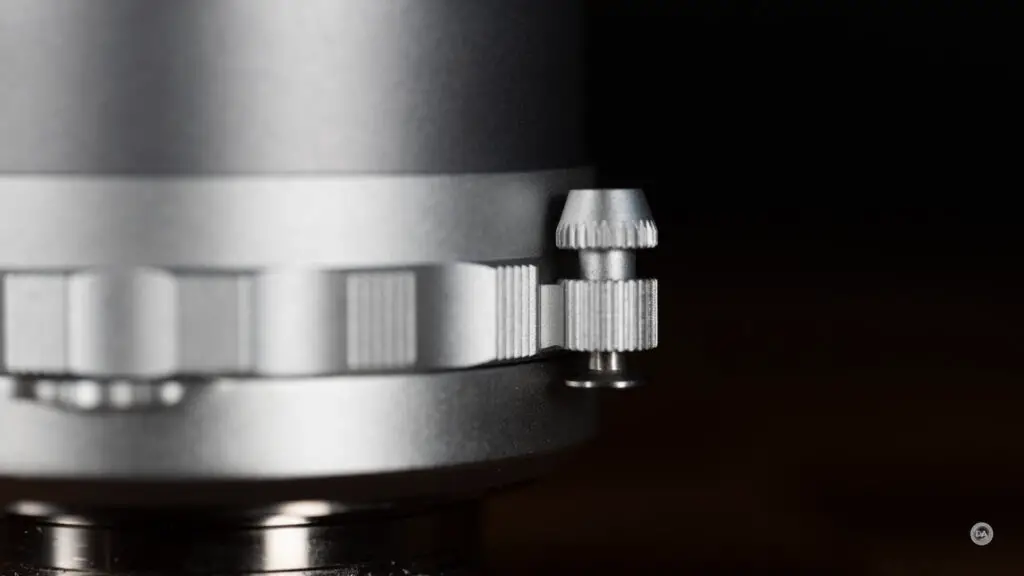
The focus action is nice and smooth. There’s a little extra drag at 0.7 meter by design, as Leica’s rangefinder bodies typically only focus to about that range, and any closer focus requires an LCD liveview style focus. That’s not an issue for me, obviously, since I’m not actually testing on a Leica body. the Simera 28mm is an internally focusing lens; there is no extension of the barrel during focus.
The aperture ring is located near the front of the lens, and it too has some nicely knurled portions along with some ribbing to help with grip. I discovered something unexpected on the ring, and that was that one of those raised sections is actually a switch to allow one to switch between a clicked aperture (signified by a “sun” symbol) and a declicked aperture (represented by a “moon” symbol). I’m not sure I understand the connection between those two things, but having this option is a nicely upscale feature.
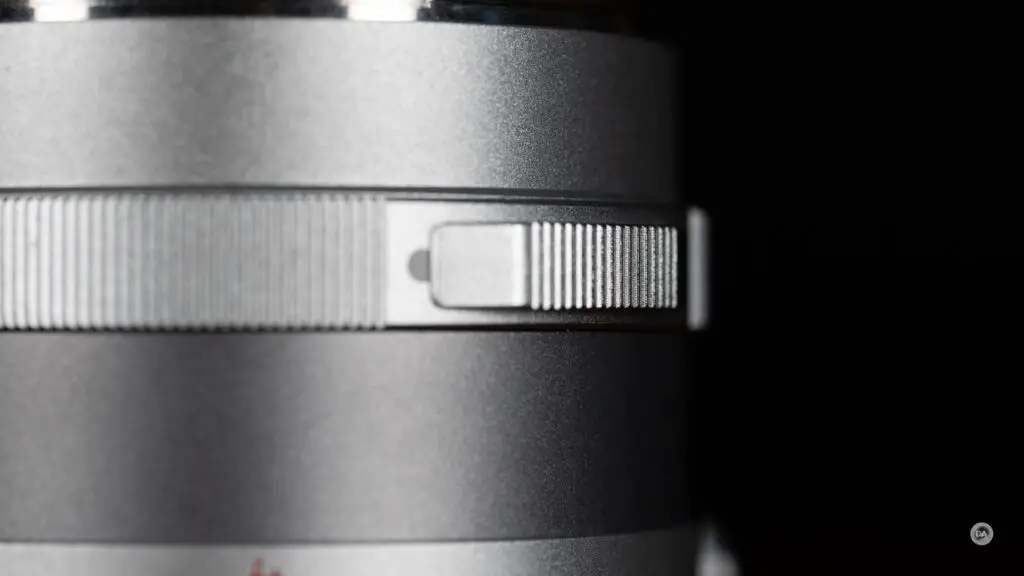
In the clicked mode there are nicely defined one third stop detents between F1.4 and F8, and then full stop detents at F11 and F16. In the declicked mode you can very smoothly rack throughout the whole aperture range for cine work.
Very nice.
It’s also imperative to mention the aperture iris itself, which has 14 rounded blades and does a stunningly good job of maintaining a circular shape throughout the zoom range. It’s an extremely lovely aperture iris.
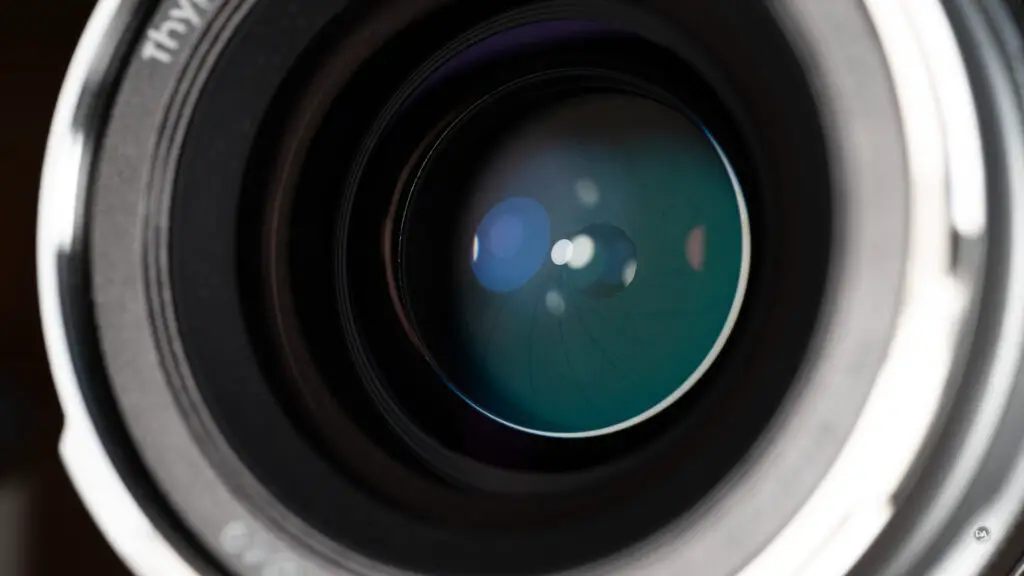
In between the two rings is one of the interesting “Easter eggs” of the design. Instead of a typical hyperfocal scale, there are interesting little pinholes that typically just have silver (or black) behind them. As you begin to close down the aperture, however, those pinholes begin to show red for each aperture stop, signifying a new point where you can put the infinity marker to achieve hyperfocal distances. It’s a stylish touch, particularly in the silver edition.

The front aspect of the lens has the lens designation of the lens, the filter thread, and then a bayonet style mount for the lens hood. Like the Leica lenses, the lens hood is rectangular rather than circular, though with 45° angles on each of the corners. It is made from a lightweight aluminum and has a retro style to it that should appeal to those who love the Leica aesthetic.
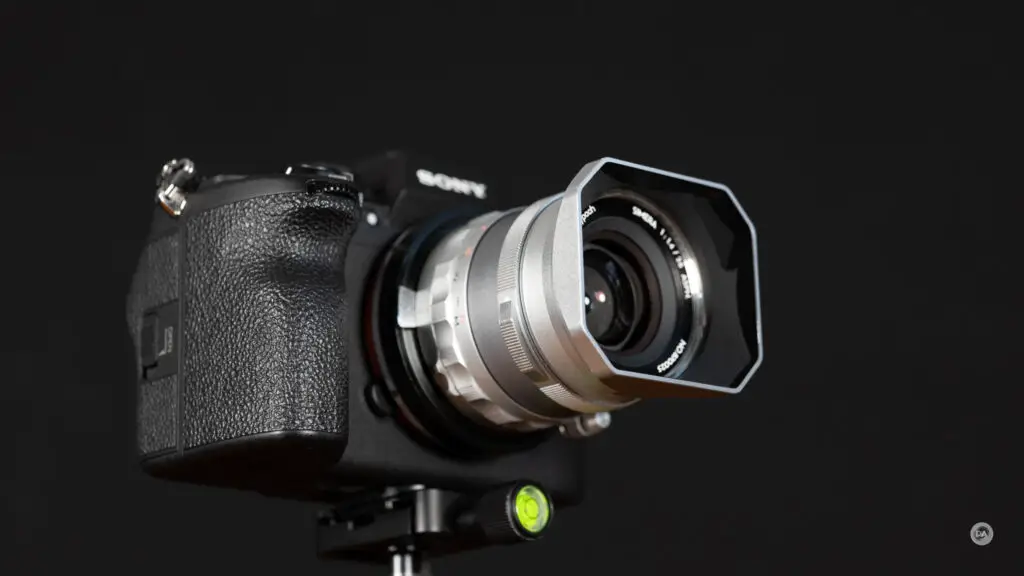
As an aside, the front cap is a slip over rather than pinch style, which means that it won’t fit on when the lens hood is mounted, so this is an either/or situation.
Since I used the lens on the Techart adapter for a lot of my review period, I did have autofocus of a sort. The Techart LM-EA9 works by moving a lens forwards or backwards (physically) to achieve focus. Getting optimal performance is sometimes dependent on setting the manual focus ring at the proper distance. Early one I did some false positives for infinity focus (landscapes), but the images weren’t sharp because the lens wasn’t allowed to focus to infinity. I just had to be more aware and accommodate for it in subsequent shots if I wanted to shoot at the extremes. That meant moving the manual focus ring closer to infinity for some shots but more towards to minimum if I wanted to shoot at very close focus distances. Somewhere near the 5 meter range seemed to work best for most types of photography, though obviously if I focused the lens closer it would allow me to achieve focus at closer distances than the 40cm standard minimum focus distance.
Close focus is not a frequent strength for Leica M-mount lenses. As noted previously, the bodies are not really optimized for that, so it doesn’t seem to be a priority in Leica lens design. The Summilux lens only allows for a 70cm minimum focus distances, while the Summicron-M shares the 40cm MFD of the Simera 28mm. That doesn’t allow for a very high maximum magnification at 28mm, and, while Thypoch doesn’t list a maximum magnification, the Summicron has the same focal length and MFD and reports a very low 0.09x magnification level, which is probably about what the Simera 28mm has. Here’s what that looks like.

The Thypoch Simera 28mm F1.4 is a beautifully built little lens that was generally a joy to use. I’m not quite sure that the lock at infinity is necessary, but it does add a bit of a retro charm to the lens at the same time. I had both the 28mm and the 35mm lenses at the same time (they are both near identical in size and design), and they both felt great in the hand and fun to use in the field. I would say that Thypoch is mostly nailing the design here and has gauged their potential audience well.
Thypoch Simera 28mm F1.4 Image Quality
The Simera 28mm utilizes an optical design of 11 elements in 7 groups. This includes a few more exotic elements like 1 ED element, 1 Aspherical element, and 3 HRI (High Refractive) elements. Also important is the fact that there is a floating element group which allows the lens to perform better at closer focus distances.
The MTF chart suggests a good (not great) center sharpness that gradually fades to relatively soft results in the corners at wide apertures, while stopping down presents a near identical center performance, an improved mid-range performance, and slightly improved corners.
-819x1024.png)
I’ve done my testing on both a 50MP Sony Alpha 1 and a 61MP Sony a7RV, so the Simera 28mm has been forced to really perform under demanding conditions, but I’ve actually been more impressed with my real world results than the MTF charts suggest.

The Leica audience is a little different a more mainstream brand. People are looking for the “Leica look” more than just a purely technical performance. I’ll try to bear that in mind as a part of my assessment of the lens.
The first technical hurdle is easily overcome, however, as there is next to no distortion here and only an average amount of vignette for an F1.4 lens like this.
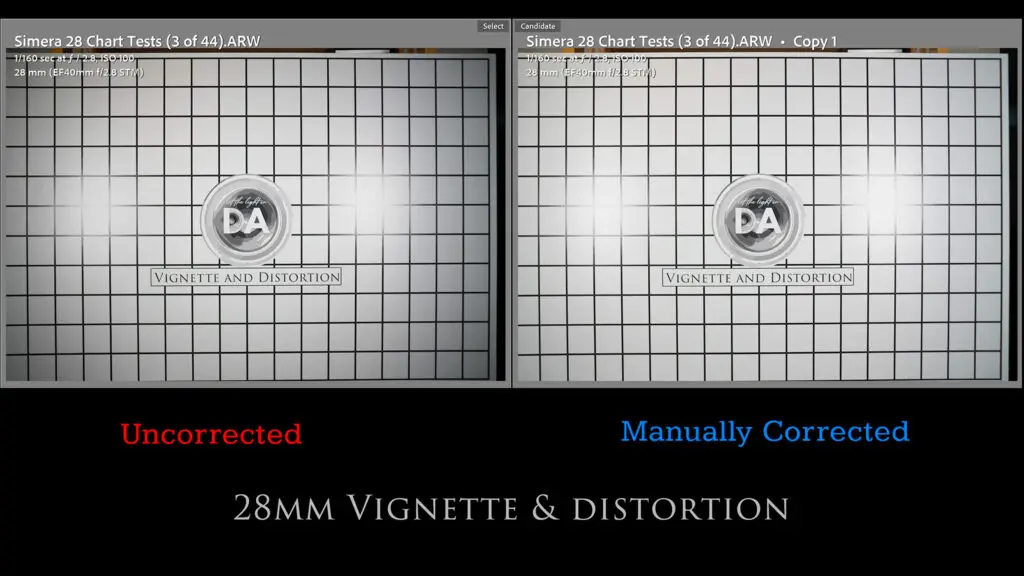
I used a -1 to correct a minimal amount of pincushion distortion and a +73 to correct the vignette. That’s a fairly heavy amount of vignette (nearly 3 stops), but that’s pretty typical for a lens like this.
This is a lens without electronics, and while I can set the focal length in the adapter to report properly (28mm), Lightroom reports this as being the Canon EF 40mm F2.8, for some reason. Just disregard that.
Longitudinal chromatic aberrations (LoCA) are fairly well controlled, with only minimal amounts of green fringing after the plane of focus.
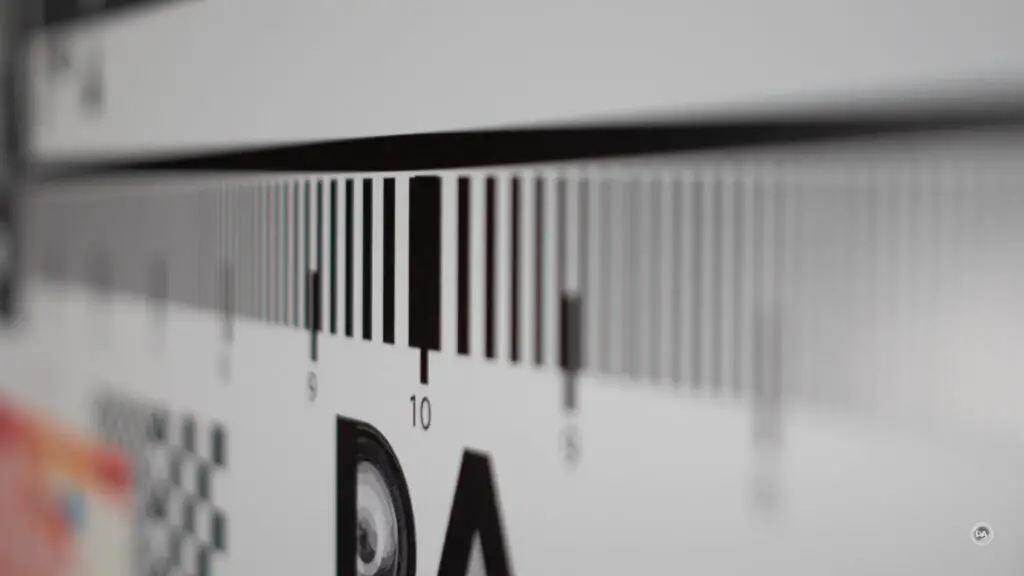

I didn’t really see any evidence of Lateral CA (LaCA) that shows up near the edges of the frame either. There’s clean transitions from black to white near the edges of the frame.
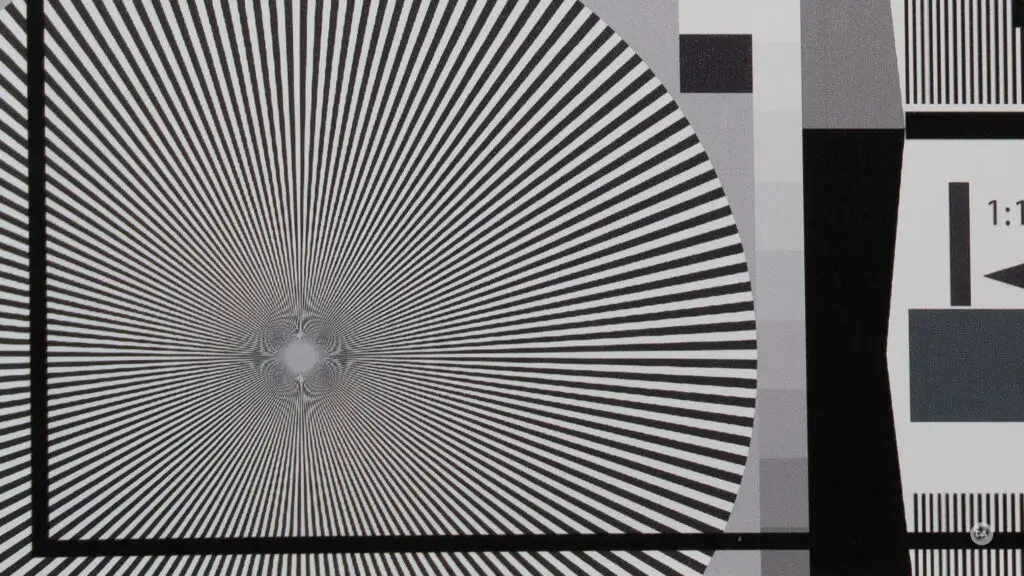
So how about resolution and contrast? My tests are done on a 61MP Sony a7RV, which is currently the highest resolution point on a full frame camera and is similar to that of the Leica M11. Here’s a look at the test chart:

And here are the F1.4 crops at roughly 180% from the center, mid-frame, and lower right corners:



The center of the frame detail and contrast look very good, though not what I would call pin-sharp. The mid-frame is softer but still acceptably sharp, while the corners look very soft at this level of examination.
I found that real world results at F1.4 looked better than what my chart tests show, however, and I was generally pleased with wide open results. Here’s an example along with a detailed crop, which we’ll break down after viewing.


You can see from the crop that there is a fairly good amount of detail at F1.4, and while contrast isn’t anywhere near APO level, there’s enough. But what isn’t there is spherical aberrations and a “bleeding” on the edges of the textures. But then stepping back to the full image shows a very nice “look” to the image, which has received no editing at all. The transition to defocus is very nice, and it is that “drawing” that is most likely to appeal to Leica shooters who maybe don’t want to spend the thousands to get a Leica branded 28mm lens.
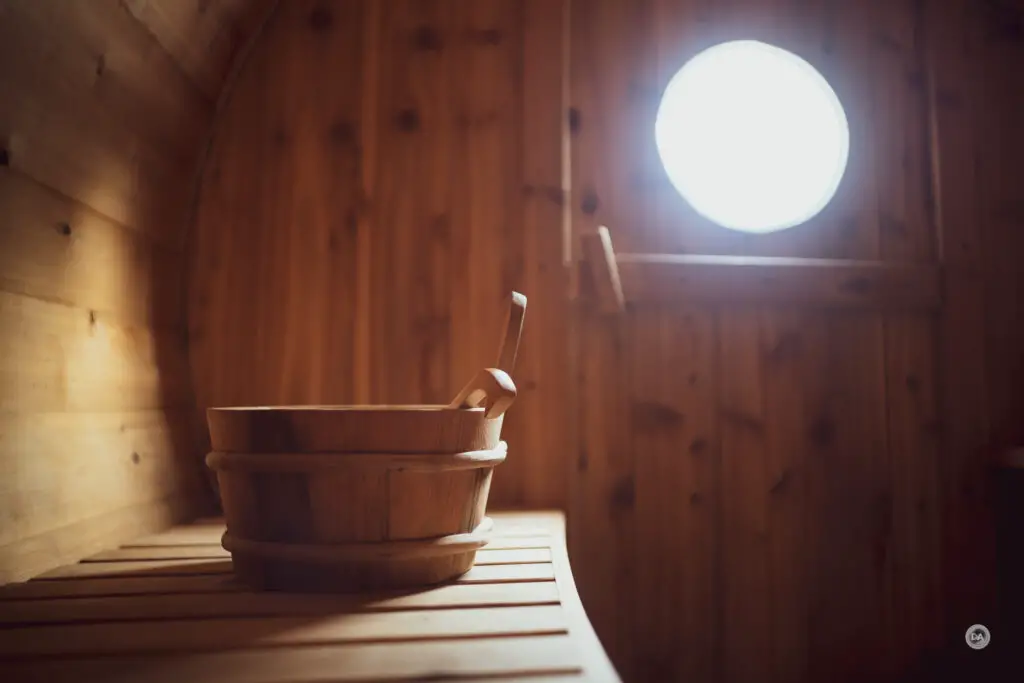
By F2 the center levels of contrast and detail are at very high levels.
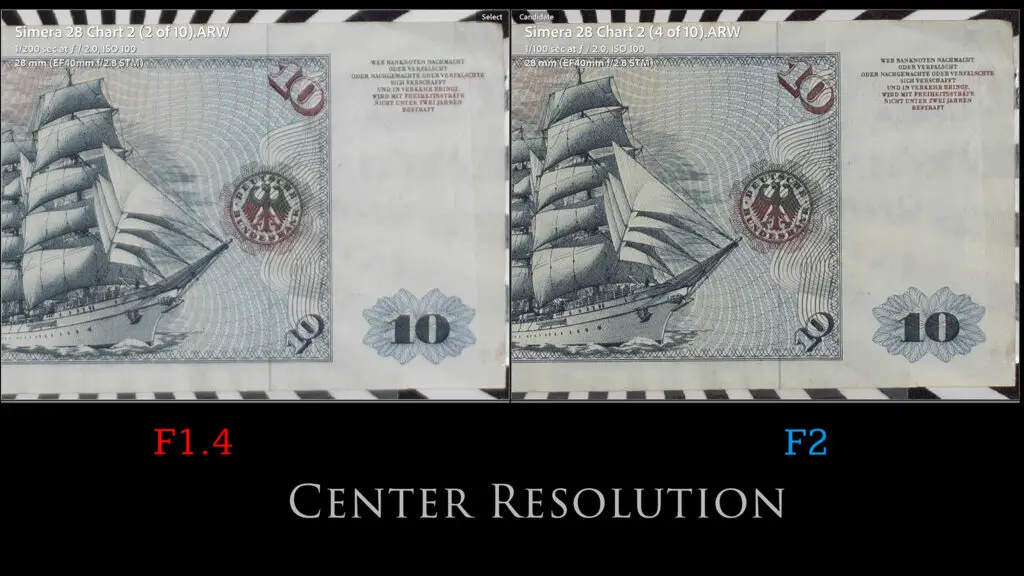
You can see from the example below that the mid-frame resolution isn’t quite as crisp at F2, but by the time you get to F4 and F5.6, things are looking pin-sharp there.
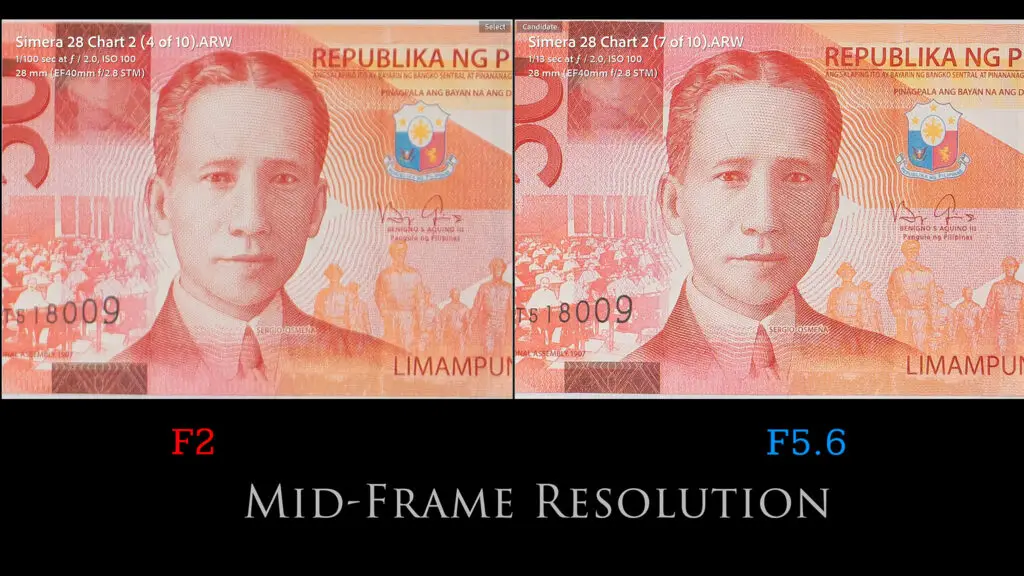
Corner Performance peaks around F8. You can see that F5.6 (bottom left) looks good, but F8 (bottom right) looks fantastic.

The effects of diffraction will be felt after F8, with slightly less sharp results at F11 and then softer still at F16, though neither result is terrible.
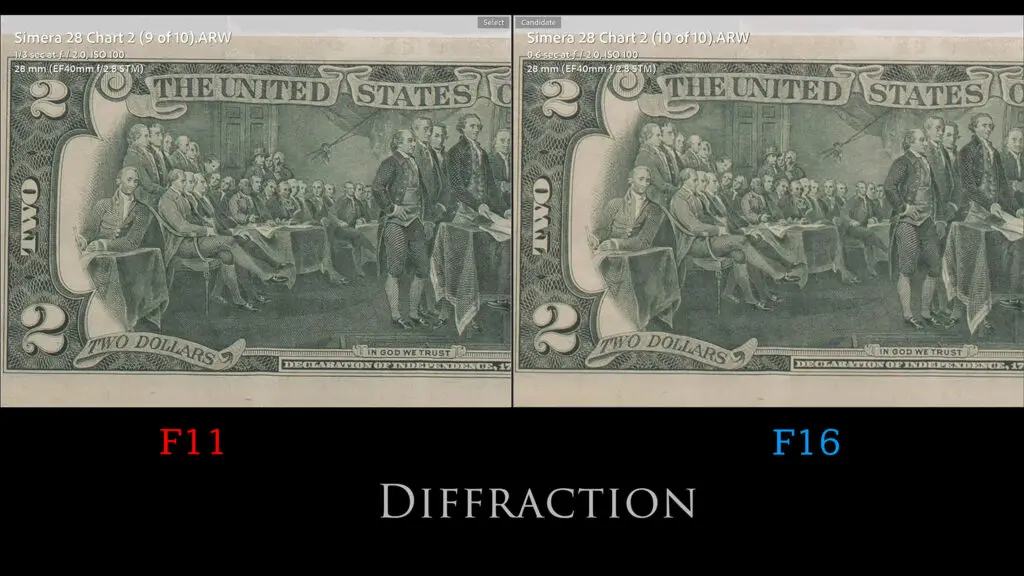
While landscape images probably aren’t the primary purpose of this lens, it is capable of producing nice looking results.

While the lens is probably not optimized for infinity focus, it still delivers crisp results at smaller apertures (F8, here):



Contrast at infinity focus at large apertures isn’t great (I liked it better at close to medium range), but this shot at F2 where I used depth of field to emphasize the distant snowy tree line shows that results at large apertures still look pretty good.


At close to medium distances contrast looks pretty great. I shot this image either at F1.4 or F1.8:

So enough about sharpness (it’s enough to make most Leica shooters happy, I think), and let’s talk about the bokeh and rendering from the lens. At F1.4, there is certainly some geometric deformation of specular highlights (bokeh balls) near the edge of the frame, giving them a lemon shape. In the sequence below, however, you can see that by F2 the results are largely circular, and then at F2.8 they are definitely circular all across the frame. That beautifully circular aperture shape means that specular highlights remain very circular at smaller apertures.



The large maximum aperture means that you can really create a very creamy background, as in this shot of the Simera 35mm:
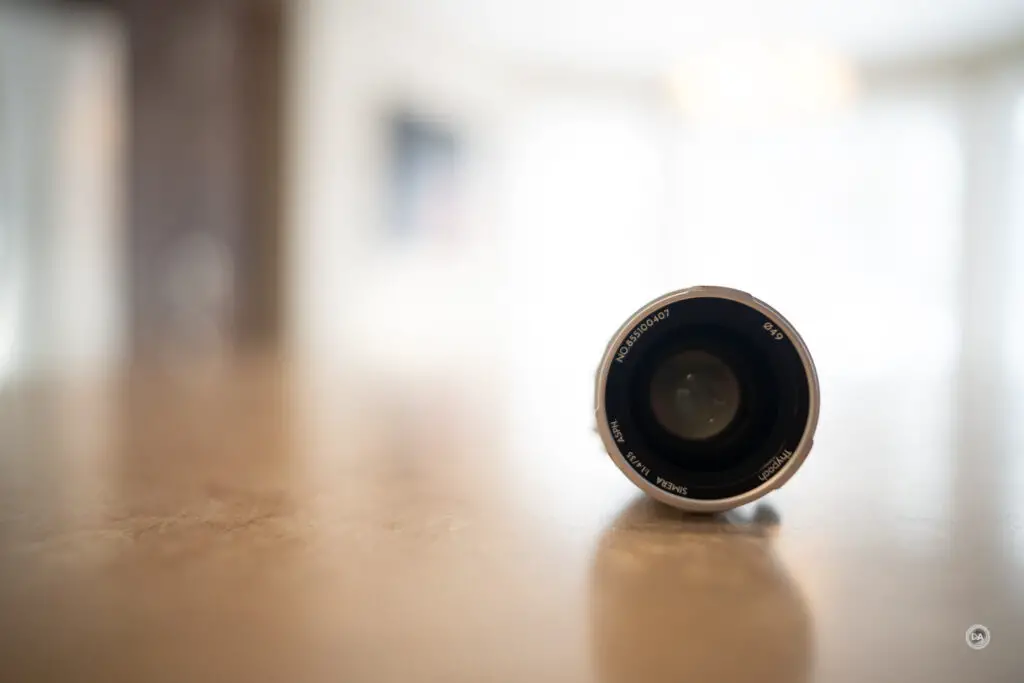
If you shoot frame a little further away at F1.4 you will get a bit of a “swirly” effect near the edges of the frame due to the “lemon shape” of the specular highlights. People’s opinion on this varies, but as someone who loved the effect in old Helios lenses, I’m somewhat partial to it.

In general I felt like the quality of the bokeh from the Simera 28mm was very nice, even handling the tricky transition zone to defocus quite well.

In these images I think you can start to get a feel for the lens and whether or not you like the rendering from it.

In general I found that I liked the overall “feel” of images from the lens. A lens like this should not be clinical and without personality, and I think that Thypoch has done a good job of creating a lens that has some character.
Another area of strength for the lens is in its flare resistance. It handled “sun through the window” backlighting really well, giving everything a bit of a warm, soft glow that is very pleasing but while retaining contrast. But even at smaller apertures shooting into the sun there was minimal ghosting (mostly a single blob that isn’t too distracting).



Flare can be an area of weakness for a lens like this, but not the Simera 28mm. It handled it all very nicely.
I did test for coma, though my opportunity came before I had a manual adapter, and the Techart adapter can be a little difficult to use for that kind of condition (focus isn’t confident enough to autofocus, but sometimes the adapter can get in the way of proper infinity focus if it moves the lens to the wrong position before you start manually focusing). My test results are not perfectly focused, so I can’t comment on how crisp the star points will be. What I can tell you is that A) the lens does a good job of not having chromatic aberrations around bright points of light and B) there is some coma distortion of star points near the edges of the frame (see the final crop below), but it isn’t extreme. I’ve seen worse, and I’ve seen better. We’ll call it average.
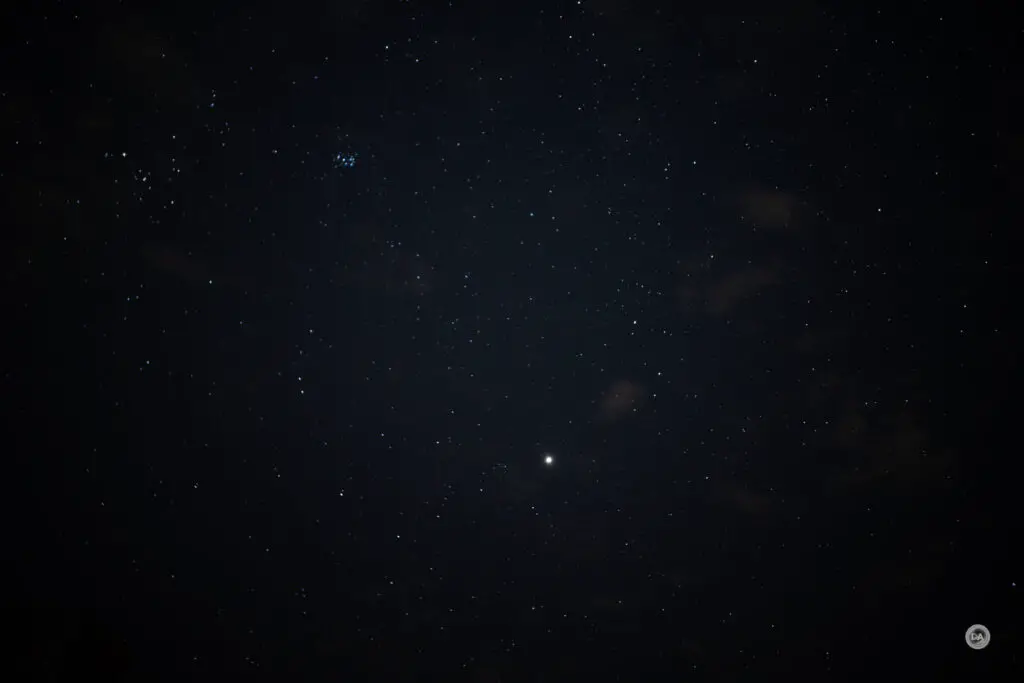
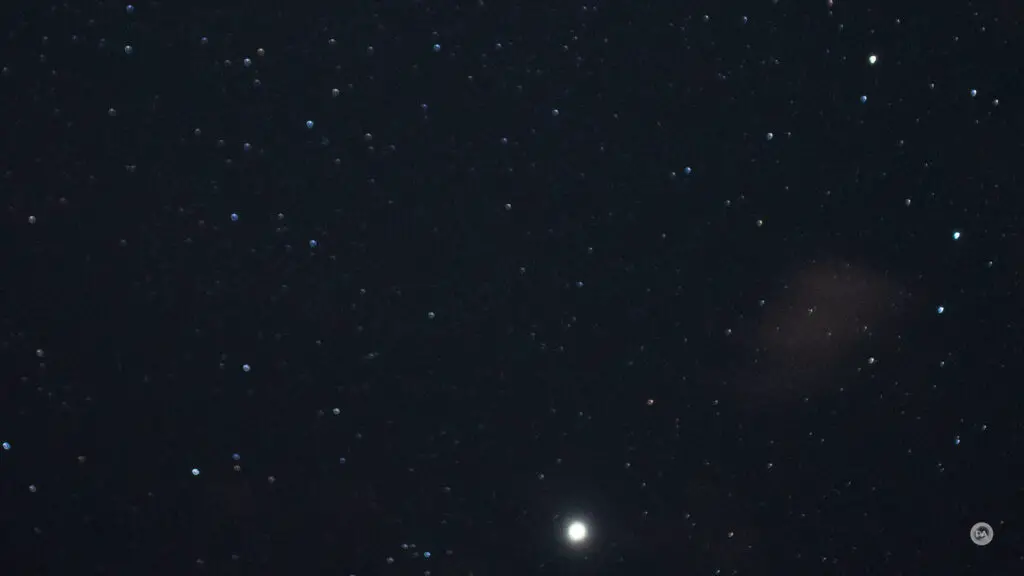

In summation, I found a whole lot more to be happy about than what I did to complain about. Colors looked nice, and I found that I didn’t need to do much processing to images. I generally liked the way that they looked right out of the camera.
Corner sharpness isn’t great at large apertures, but that’s unlikely to affect the kinds of shots that most people will take at large apertures with this lens. Within the typical rule of thirds composition, the Simera 28mm is going to give you great looking results.


Check out the image gallery for more shots to help you get a feel for whether or not the Simera 28mm has the “look” you are looking for.
Conclusion
It’s great to start 2024 with a brand new lensmaker who is off to a great start in evaluating a market and building a lens to fill it. Targeting the Leica M-mount market is a different strategy than I’ve often seen from new lensmakers, but it seems like Thypoch recognized an opportunity to built a slightly more upscale lens that is still going to seem a bargain in the Leica community. The market on Sony is pretty flooded, but I think that these Simera lenses might get more attention on the less populated Leica side of things.

There are obviously a number of 28mm lenses on Leica, but that is largely due to its retro vibe. 28mm used to be an extremely popular focal length, but it has been less so in the digital era. I enjoy shooting with it, however, and of the two Simera lenses I would say that I preferred the overall performance of the 28mm.

The Leica platform is about the look, and I think that Thypoch has done a good job of providing a far less expensive alternative to Leica branded lenses while retaining a lot of the charm that makes people love Leica. For less than $700 you can land a lens in the Thypoch Simera 28mm F1.4 that has a lot of what people love about the $7000+ Leica Summilux-M 28mm F1.4…and even in the Leica world of deep pockets, that’s surely going to appeal to a few people! Welcome to the market, Thypoch. Here’s hoping this is your era.

Pros:
- Beautifully made lens with attention to detail
- Declick option
- Love the silver finish
- Good performance of focus and aperture rings
- 14 bladed aperture iris is beautiful
- Compact and lightweight
- Good rule of thirds sharpness even at F1.4
- Nice bokeh
- Very low distortion
- Low chromatic aberrations
- Good flare resistance
- Nice rendering and drawing
- 11x cheaper than the Leica alternative
Cons:
- Corners are soft at large apertures
- Low maximum magnification
- Fairly strong vignette
_________________________________________________________________________
GEAR USED:
Purchase the Thypoch Simera 28mm F1.4 @ B&H Photo or Adorama
Purchase the Techart LM-EA9 @ B&H Photo | Amazon | Amazon Canada | Amazon UK | Amazon Germany
Purchase the Sony a7RV @ B&H Photo | Adorama | Amazon | Camera Canada | Sony Canada | Amazon Canada | Amazon UK | Amazon Germany
Purchase the Sony a7IV @ B&H Photo | Adorama | Amazon | Camera Canada | Sony Canada | Amazon Canada | Amazon UK | Amazon Germany
Want to support this channel? Use these affiliate links to shop at: B&H Photo | Amazon | Adorama | Camera Canada | Amazon Canada | Amazon UK | Ebay | Make a donation via Paypal
Buy DA Merchandise https://bit.ly/TWIMerch
Keywords: Thypoch, Simera, 28mm, F1.4, Simera 28, 35mm, M-mount, Rangefinder, Techart, LM-EA9, LMEA9, Techart LM-EA9 Review, LM-EA7, Leica M to E, Full Frame, Review, Sony Alpha 1, Sony a7RV, Review, Hands On, Dustin Abbott, Real World, Comparison, Sharpness, Bokeh, Flare Resistance, Autofocus, Image Quality, Sample Images, Video, Photography, let the light in, #letthelightin, DA
DISCLAIMER: This article and description contains affiliate links, which means that if you click on one of the product links, I’ll receive a small commission. As an Amazon Associate I earn from qualifying purchases.










 GOOVIS ART Head Mounted Display Review
GOOVIS ART Head Mounted Display Review 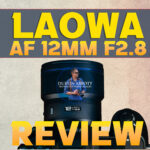 Laowa AF 12mm F2.8 Zero D Review (Z-Mount)
Laowa AF 12mm F2.8 Zero D Review (Z-Mount)  Nikkor Z 35mm F1.2 S Review
Nikkor Z 35mm F1.2 S Review  Kase AF 85mm F1.4 Review
Kase AF 85mm F1.4 Review 


